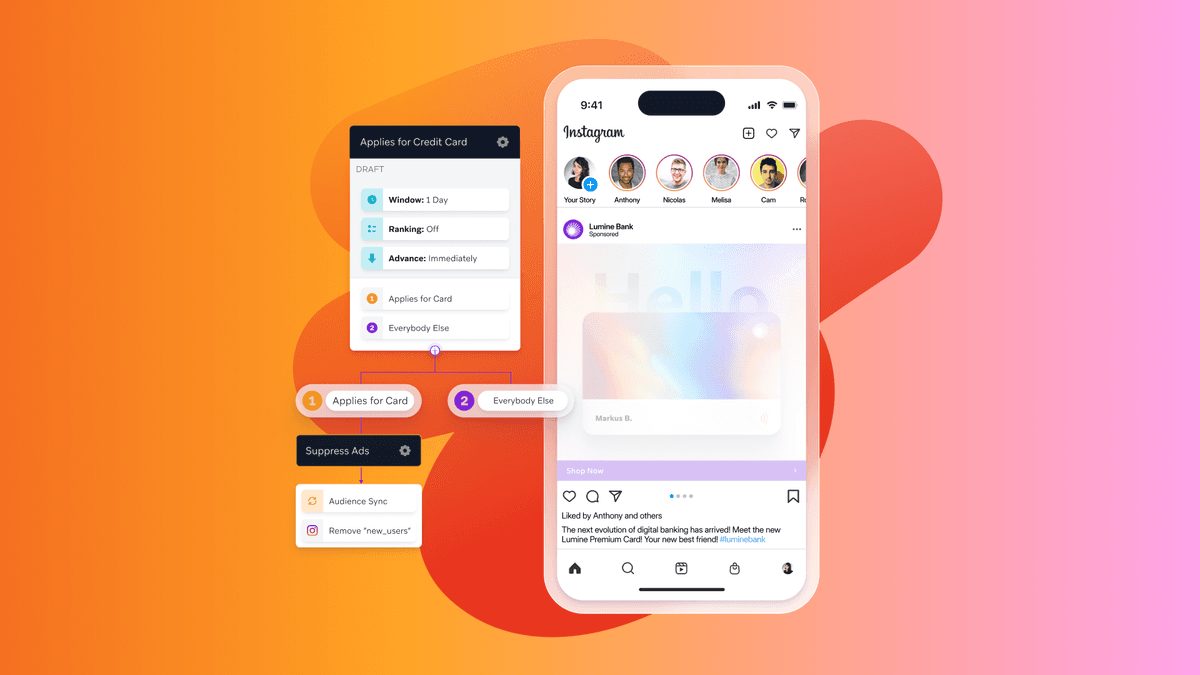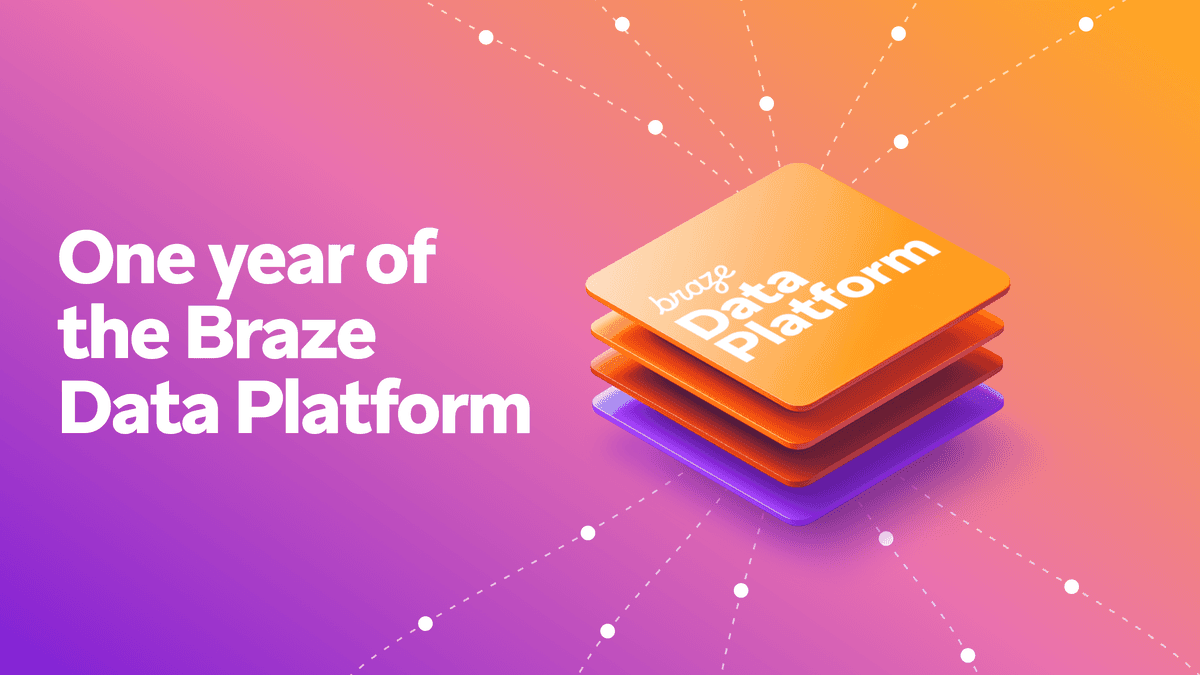Maximize Your Data's Value With Braze and Snowflake
Published on January 04, 2023/Last edited on January 04, 2023/6 min read


Team Braze
We’ve seen an explosion of data in recent years, with businesses having access to more information about their customers’ preferences and behaviors than ever before. This presents a great opportunity: Brands that are able to use this data effectively to deliver personalized marketing experiences that drive customer lifetime value can unlock a serious competitive advantage.
However, without the right tools, that’s no easy feat. Siloed systems and outdated data often leave companies unable to take full advantage of their own data. By some counts, more than two-thirds of data that gets collected goes unused. But—thanks to the power of Braze together with Braze Alloys technology partner Snowflake—it doesn’t have to be that way.
How Braze Data Can Help You Activate Your Data
Typically, brands face a range of challenges that prevent them from utilizing their data effectively, including:
- Unstructured data that’s difficult to process
- Data silos and compliance requirements that inevitably lead to data loss
- Under-resourced IT teams that lack the time to build and maintain custom complex data pipelines needed to fully utilize data
- Systems that rely on batch data processing, instead of real-time data processing, which leads to data processing bottlenecks, latency, and broken customer experiences
- Resource-intensive workflows that are necessary for creating unified customer profiles across multiple systems that tie in key information from brand interactions across channels
The Braze and Snowflake integration can help brands solve these challenges. Let’s take a look at how:
1. Activate any data with flexible, turnkey integrations
The Braze platform’s vertically integrated and streaming architecture gives brands the ability to easily take action to orchestrate journeys, segment customers, and personalize experiences—all from a single platform.
To bring both structured and unstructured data into our system so that it can be used the moment it's created, we offer a variety of flexible integrations:
- Braze Cloud Data Ingestion, a new offering that allows Braze to connect directly to key platforms like data warehouses (e.g. the Snowflake data warehouse)
- SDKs for Web, Android, iOS, etc.
- APIs that are simple to connect to and scalable
- Braze Alloys partner integrations
2. Deliver performance at scale with stream processing
With the Braze platform’s stream processor, built on a foundation of modern architecture, brands can take real-time action the instant that data flows into the system, supporting timely, relevant customer engagement.
3. Unify customer engagement
While typical point solutions create siloes by channel, the Braze platform is fully integrated, meaning you get a complete picture of what your customers are doing, experiencing, and interacting with across channels. Live profiles provide a 360-degree view of customers that can be used for dynamic segmentation, as well as action-based and API triggers that can serve up personalized messaging based on real-time activity.
5 Steps to Take to Get Your Data in Order
Whether you’re building a new data strategy or trying to scale your existing data strategy to handle more data more effectively, here are five recommended steps that Matt Hill, Head of Application Strategy at Snowflake, shared at FORGE 2022, our annual customer engagement conference.
1. Create a data strategy. “Develop a comprehensive data strategy that encompasses current and future use cases and accounts for people, process, and technology needs,” Matt said. “What we find is that when companies don’t really think through the strategy upfront, they end up with loosely coupled tools and databases where employees spend more time trying to wrangle and move data around versus actually using that data.”
As part of this process, you will need to find out:=
- Which users you’re looking to support
- What their objectives are and how you plan to help those users reach them
- If you have the teams and technology in place to support those users effectively
2. Once you’ve defined your data strategy, identify which data sources are needed. At this step, you’ll need to consider which data processing solution—extract, transform, load (ETL) or extract, load, transform (ELT)—is optimal to move and ingest that data into a centralized environment. Here are some considerations to explore:
- Do you want an extremely flexible and customizable tool that can be used for nearly all use cases?
- Do you want a lightweight tool that’s easy to manage but that may not come with all the full functions of other more flexible, customizable tools?
- Which tool has the most pre-built connections to the systems you’re already using?
3. Store the unified data in a single platform like Snowflake, which can natively support unstructured and structured data in the same system.
4. Ensure this single source of data can be accessed by all types of users—both technical and non-technical users across all departments—and proactively establish a self-serve strategy to eliminate bottlenecks. Think about the relevant use cases both inside and outside of marketing.
5. Prioritize data-driven initiatives by focusing on efforts that will yield the greatest impact, and communicate those priorities across the business.
5 Use Cases for Snowflake + Braze
By harnessing the full potential of Snowflake and Braze together, brands have access to both the industry-leading place to store their information and the best-in-class capabilities to act on all of that data.
1. Act on essentially all of your business data, not just some of it. With Braze and Snowflake, you can bring together customer data (from your CRM and digital analytics) and campaign data (from email, SMS, paid media, search, and display), but also operational data (such as inventory, sales, price, product, revenue, and margin) and offline data (like instore purchases and delivery confirmations) to support your customer engagement efforts.
2. Enrich your first-party data with thoughtful third-party data like demographics, attribution, foot traffic, weather, and location data.
3. Save on data engineering resources by removing the need to build out and maintain complex data pipelines.
4. Bridge the gap between data and marketing teams to help serve more effective, efficient personalized content. Data scientists today often lack access to the data they need to build models and conduct exploratory analyses. With data centralized in Snowflake, they can use these insights to predict customer lifetime value and create look-alike models to develop campaigns and offers that resonate and generate concrete business results.
5. Leverage data from Snowflake to inform Braze strategies and leverage Braze data in Snowflake to improve the overall customer experience, By bringing these two solutions together, brands can enrich and sharpen customer engagement programs delivered via Braze while also giving analysts and data scientists more data to use to look for insights and improve the customer experience.
Final Thoughts
Get more out of your data with our newly launched Braze Cloud Data Ingestion feature. This key tool works with Snowflake and is designed to enable brands to quickly and flexibly collect, process, and maximize the value of their data to boost ROI.
Related Tags
Be Absolutely Engaging.™
Sign up for regular updates from Braze.
Related Content
View the Blog
What is triggered communication? How to automate smarter, timely campaigns

Team Braze

One year of the Braze Data Platform: Elevating user experiences and cross-team collaboration

Sahiz Kaur

Global and regional AI adoption: What it means for customer engagement
